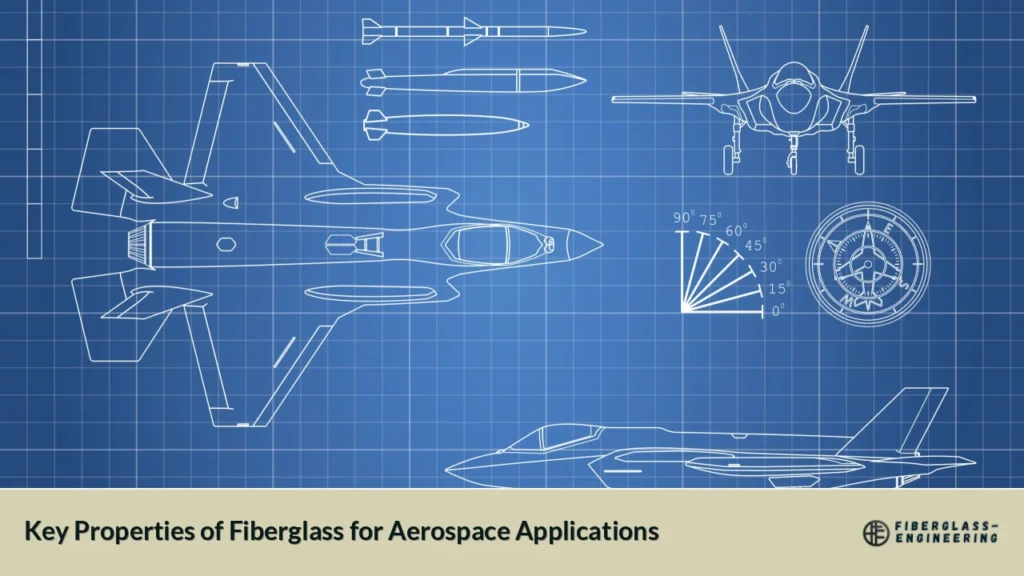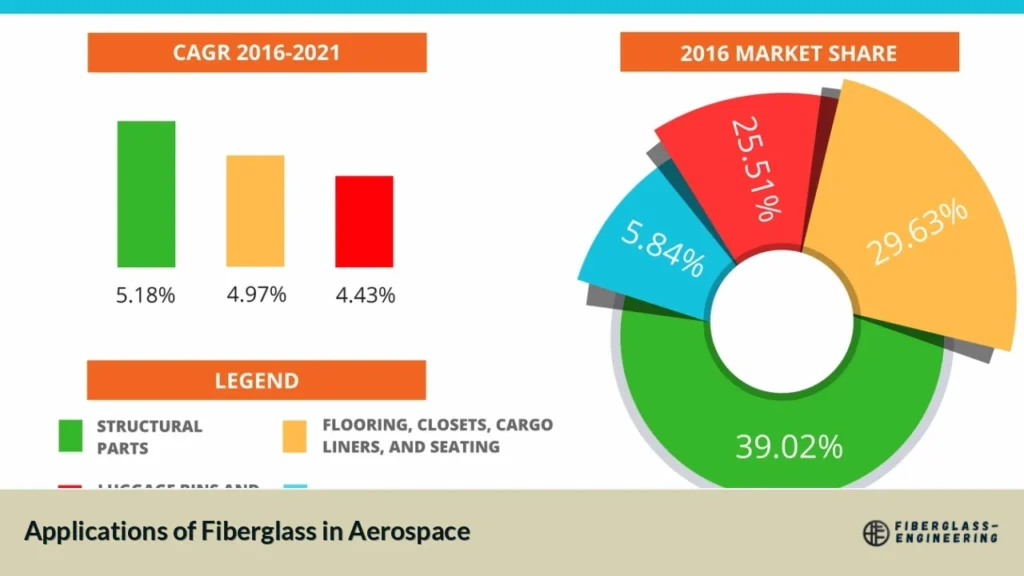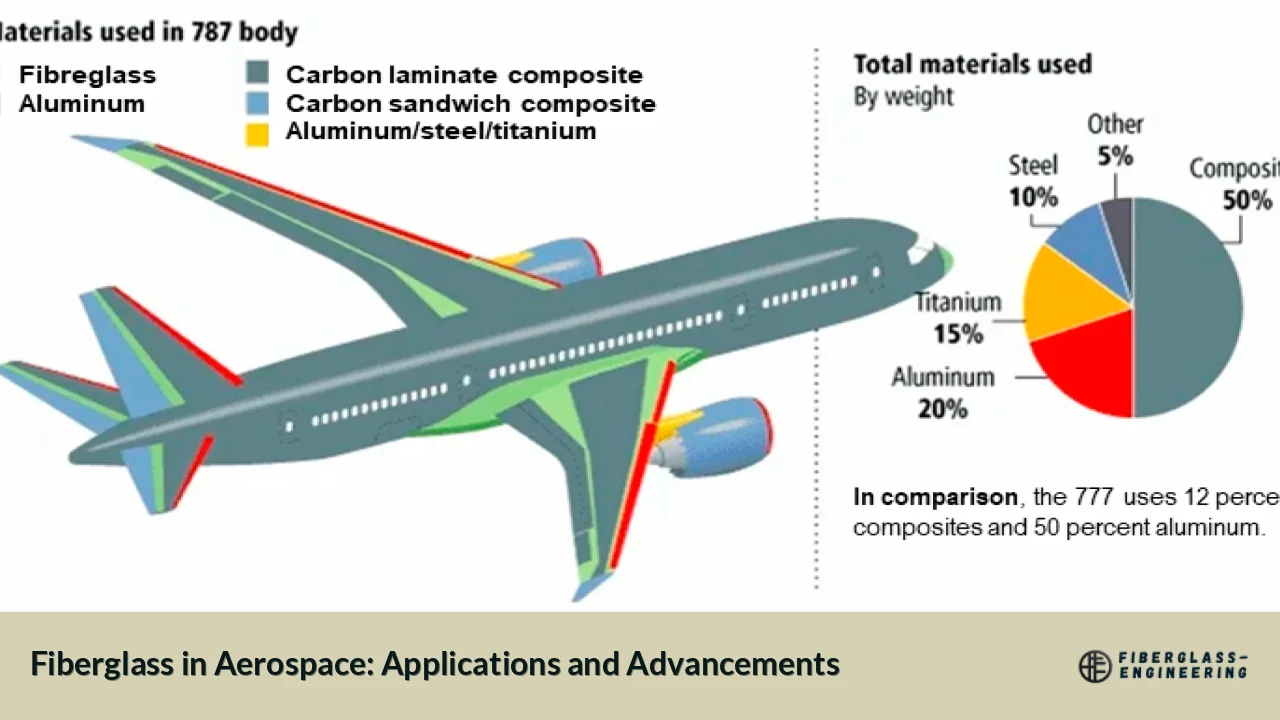Fiberglass has revolutionized the aerospace industry, offering a lightweight yet robust alternative to traditional materials. This versatile composite material has found its way into various aircraft components, from structural elements to interior furnishings. As the aerospace sector continues to evolve, fiberglass remains at the forefront of innovation, enabling manufacturers to create more efficient and durable aircraft.
The Rise of Fiberglass in Aerospace
The aerospace industry's adoption of fiberglass dates back to the 1950s, with the Boeing 707 marking a significant milestone in its utilization. Since then, fiberglass has become an integral part of aircraft design and manufacturing. Modern airplanes now incorporate composite materials, including fiberglass, for up to 50% of their total weight, showcasing the material's importance in contemporary aerospace engineering.
Key Properties of Fiberglass for Aerospace Applications

Fiberglass offers a unique combination of properties that make it ideal for aerospace applications:
- Lightweight: Fiberglass is significantly lighter than traditional metals, contributing to fuel efficiency and increased payload capacity.
- High Strength-to-Weight Ratio: Despite its low weight, fiberglass exhibits excellent strength, making it suitable for structural components.
- Corrosion Resistance: Unlike many metals, fiberglass does not corrode, ensuring longevity in harsh environments.
- Dimensional Stability: Fiberglass maintains its shape and size under varying temperatures and loads, crucial for aerospace applications.
- Electrical Insulation: The non-conductive nature of fiberglass makes it valuable for various electrical components in aircraft.
Applications of Fiberglass in Aerospace

Aircraft Structures
Fiberglass is extensively used in aircraft structural components, including:
- Fuselage sections
- Wings and tail assemblies
- Helicopter rotor blades
- Small aircraft bodies
These applications leverage fiberglass's strength and lightweight properties to enhance aircraft performance and fuel efficiency.
Interior Components
The versatility of fiberglass extends to aircraft interiors, where it is used for:
- Flooring
- Seating structures
- Wall panels
- Overhead compartments
Fiberglass's ability to be molded into complex shapes while maintaining strength makes it ideal for these applications.
Cargo Liners
Fiberglass composites are commonly used in cargo liners due to their durability and fire-resistant properties. These liners protect the aircraft structure and improve safety during cargo transport.
Ducting and Insulation
The thermal insulation properties of fiberglass make it an excellent choice for:
- Air ducts
- Thermal blankets
- Sound dampening materials
These applications help maintain comfortable cabin temperatures and reduce noise levels within the aircraft.
Radomes
Fiberglass is the material of choice for radomes - the protective housings for radar equipment. Its radio frequency transparency allows for unimpeded signal transmission while providing structural protection.
Advancements in Fiberglass Technology for Aerospace
Improved Resin Systems
Recent advancements in resin technology have led to fiberglass composites with enhanced mechanical properties and better resistance to environmental factors. These improvements have expanded the use of fiberglass in more demanding aerospace applications.
Hybrid Composites
Researchers are developing hybrid composites that combine fiberglass with other materials like carbon fiber. These hybrids aim to leverage the strengths of multiple materials, creating composites with superior performance characteristics.
Nano-Enhanced Fiberglass
The incorporation of nanoparticles into fiberglass composites is an emerging trend. Nano-enhanced fiberglass exhibits improved strength, impact resistance, and fire retardancy, making it particularly attractive for aerospace applications.
Advanced Manufacturing Techniques
Innovations in manufacturing processes, such as automated fiber placement and resin transfer molding, have improved the consistency and quality of fiberglass components. These techniques allow for more complex geometries and better control over fiber orientation, resulting in optimized structural properties.
Challenges and Future Outlook
While fiberglass has proven its worth in aerospace applications, challenges remain:
- Recycling: Developing efficient recycling methods for fiberglass composites is crucial for sustainability.
- High-Temperature Performance: Improving the high-temperature resistance of fiberglass composites could expand their use in engine components.
- Damage Detection: Enhancing non-destructive testing methods for fiberglass structures to detect internal damage more effectively.
The future of fiberglass in aerospace looks promising, with ongoing research addressing these challenges. As the industry continues to demand lighter, stronger, and more efficient materials, fiberglass is expected to play an increasingly important role in next-generation aircraft design.
Conclusion
Fiberglass has firmly established itself as a critical material in aerospace engineering. Its unique combination of lightweight, strength, and versatility continues to drive innovation in aircraft design and manufacturing. As technology advances, we can expect to see even more sophisticated applications of fiberglass in aerospace, contributing to safer, more efficient, and environmentally friendly air travel.
FAQs
- What are the main advantages of using fiberglass in aerospace?
Fiberglass offers lightweight, high strength-to-weight ratio, and corrosion resistance, improving fuel efficiency and durability. - How much of a modern aircraft is made from composite materials like fiberglass?
Composite materials, including fiberglass, can account for up to 50% of a modern aircraft's total weight. - Can fiberglass be used in aircraft engines?
While not common in engine cores, fiberglass is used in some engine components and nacelles due to its heat resistance and strength. - Is fiberglass environmentally friendly?
Fiberglass is durable and long-lasting, but recycling remains a challenge. Research is ongoing to improve its environmental impact. - How does fiberglass compare to carbon fiber in aerospace applications?
Fiberglass is generally less expensive and more impact-resistant than carbon fiber, but carbon fiber offers higher strength-to-weight ratios.

